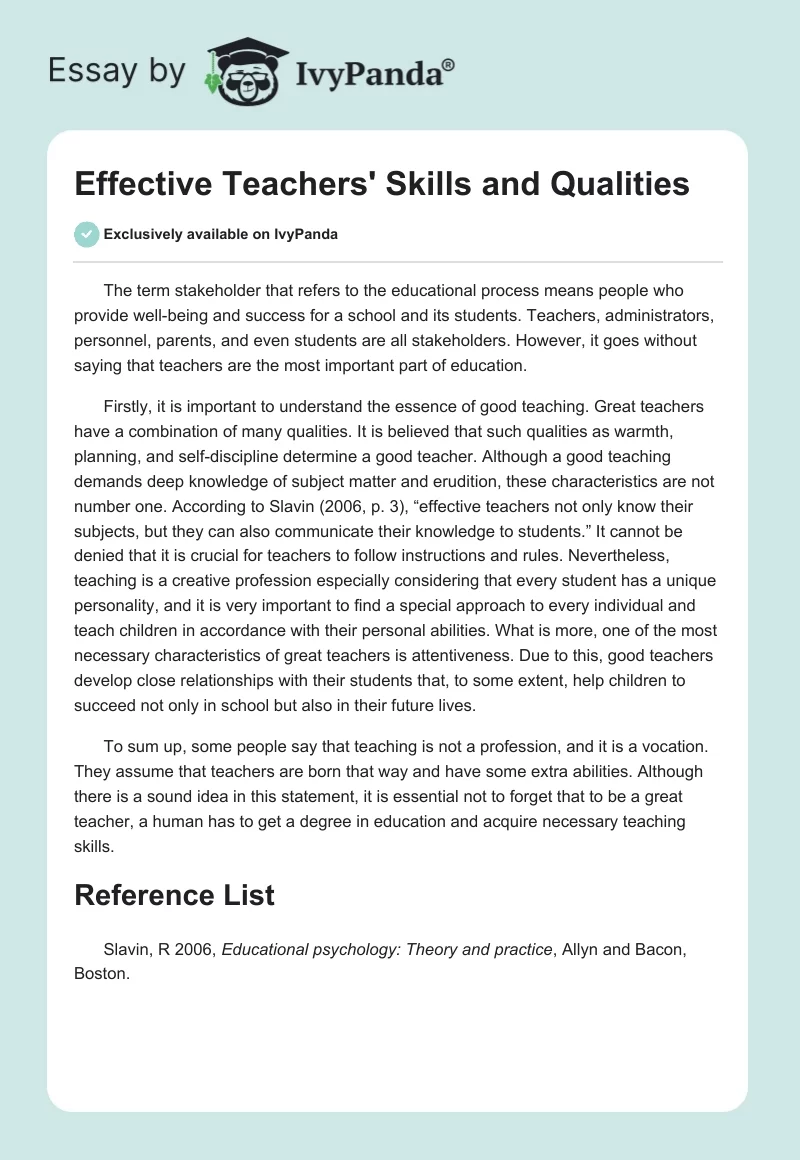The term stakeholder that refers to the educational process means people who provide well-being and success for a school and its students. Teachers, administrators, personnel, parents, and even students are all stakeholders. However, it goes without saying that teachers are the most important part of education.
Firstly, it is important to understand the essence of good teaching. Great teachers have a combination of many qualities. It is believed that such qualities as warmth, planning, and self-discipline determine a good teacher. Although a good teaching demands deep knowledge of subject matter and erudition, these characteristics are not number one. According to Slavin (2006, p. 3), “effective teachers not only know their subjects, but they can also communicate their knowledge to students.” It cannot be denied that it is crucial for teachers to follow instructions and rules. Nevertheless, teaching is a creative profession especially considering that every student has a unique personality, and it is very important to find a special approach to every individual and teach children in accordance with their personal abilities. What is more, one of the most necessary characteristics of great teachers is attentiveness. Due to this, good teachers develop close relationships with their students that, to some extent, help children to succeed not only in school but also in their future lives.
To sum up, some people say that teaching is not a profession, and it is a vocation. They assume that teachers are born that way and have some extra abilities. Although there is a sound idea in this statement, it is essential not to forget that to be a great teacher, a human has to get a degree in education and acquire necessary teaching skills.
Reference List
Slavin, R 2006, Educational psychology: Theory and practice, Allyn and Bacon, Boston.

